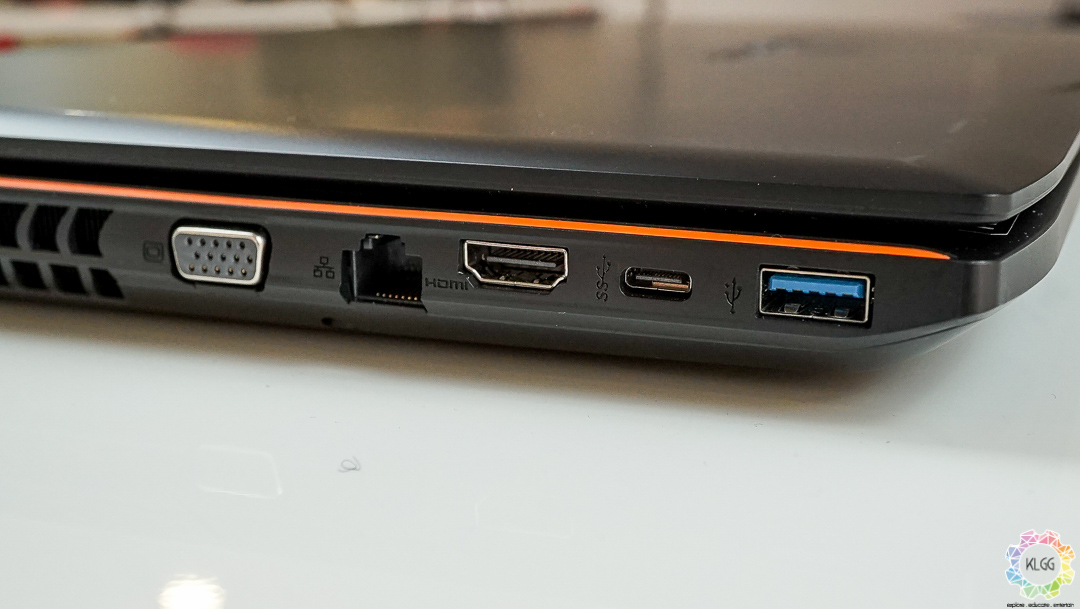Gigabyte may be a renowned for making motherboards and other PC hardware, but many in fact do not know that the company has been making laptops for a while now, when I got to have the chance to visit the company’s Computex VIP showroom last year, I was in awe on how solidly built their laptops are, the premium Aorus notebooks showed that gaming laptops do not necessarily need to be heavy and bulky, while the P series laptops tell me that high performance laptops do not necessarily need to look like a gaming laptop. I’ve recently received the P55G V5 laptop from our local Gigabyte notebook reseller for review, this isn’t any premium laptop but it is no slouch as well, in fact this has been my daily driver for a week, given that I do a lot more work on my laptop than playing games, it sure is interesting to find out how this machine will work for casual gamers.
Design and Hardware
The laptop may not look as premium as the company’s Aorus laptops, but it still looks really good with a smooth matte black finishing and an orange stripe that runs across both corners of the laptop, it is also rather solid in terms of build, the display hinges doesn’t flex as much as other similar ranged laptops I’ve tested which I can even lift the display singlehandedly without toppling the laptop over. With that said, the laptop is a rather cumbersome machine to transport around, it weighs 2.4kg and measures 34mm at its thickest point, this means it will easily take up the entire space of a round Starbucks coffee table, but given that this is a 15-inch gaming laptop, you really have to dismiss those numbers because performance laptops don’t really come in slim chassis with an affordable price tag.
So, what’s the big deal of a huge chunky laptop? Expandability of course. The P55 has a generous amount of modern input ports, including three USB 3.0 Type-A ports, one USB 3.1 Type-C port, HDMI and heck, it even has a VGA port so that you can connect to old monitors and projectors. You will also be happy to know that the laptop’s internals are easily accessible by removing a number of screws, which will enable you to increase the system’s RAM and storage.
One of my favourite features is the laptop’s dual storage system, which gives you the flexibility to install a secondary storage on top of its already huge 1TB storage, you can also opt for an optical drive if you really need one, my review unit already comes with an enclosure installed that gives me the option to slot in a secondary SATA hard drive, such feature is usually only available on higher end gaming laptops and it is really commendable of Gigabyte to make this available in the P55.
With a rather huge working area, the laptop has a full size keyboard that works really well in my case, the keys give a solid feedback and doesn’t feel too cramped, hence enabling a very enjoyable typing experience, I also like the font and glossy finishing on the keys, but the keyboard’s backlighting could be a little brighter, you can barely notice its existence unless viewed closely even though it will still do well under dim lighting. On the other hand, the huge trackpad is unfortunately a disappointing one despite having a decent tracking, it simply doesn’t do well with gestures and the buttons feel to stiff to press on, palm rejection isn’t good as well and I would recommend that you use an external mouse when possible.
User Experience and Performance
Gigabyte has preloaded Windows 10 Home on the P55 and I was glad that the stock image didn’t come with any bloatware installed apart from Gigabyte’s utility programs, hence there weren’t any major slowdowns but merely the performance limitation on the laptop’s provided Hitachi made 7200RPM hard drive, it still works decently on my day to day tasks, but I do highly recommend that you spend a little extra cash to install a SSD into the secondary SATA slot.
I have mainly used the laptop for video editing work and some fair amount of gaming, the laptop’s GTX 960M GPU will do well in video rendering, however with a 2GB video RAM, it doesn’t really handle most modern game titles properly and I have to turn off some graphics effect to achieve a playable frame rate, while Gigabyte could have installed the 4GB RAM model of the GTX 960M which is available on other competitor laptops, the GPU is not intended to render high quality graphics, it will however perform effortlessly in MOBA games.
I was underwhelmed by the laptop’s speakers, though it produces a reasonably loud volume that easily fills up our studio office, it lacks bass and oomph that doesn’t gives you an immersive listening experience when playing music with drums, gunshots and explosions, its really a shame because for the laptop’s form factor, I have expected a decent audio quality from the speakers but fortunately sound is good on headphones.
The laptop’s battery life is one of the most decent ones I’ve experienced on a gaming laptop, I ran a Full HD video loop test with hardware acceleration enabled, 60% brightness and 40% volume, while having wireless radios turned on, the laptop managed to last 4 hours before prompting me to connect the charger, I’ve also used it for my field assignments and haven’t find the need to carry the power brick along, which is the reason why I actually don’t find it too heavy to carry around at the end of the day.
Get real time update about this post category directly on your device, subscribe now.



